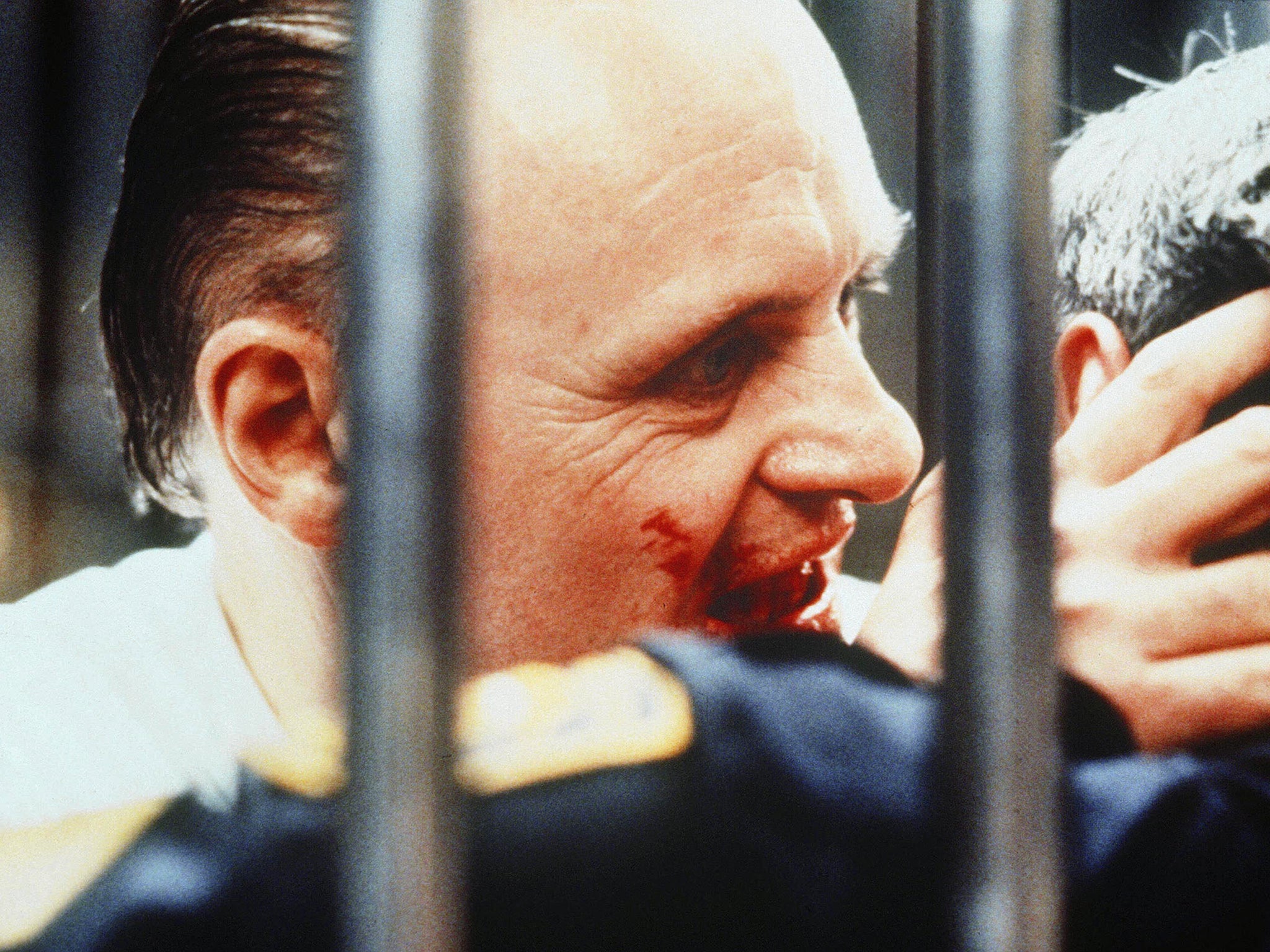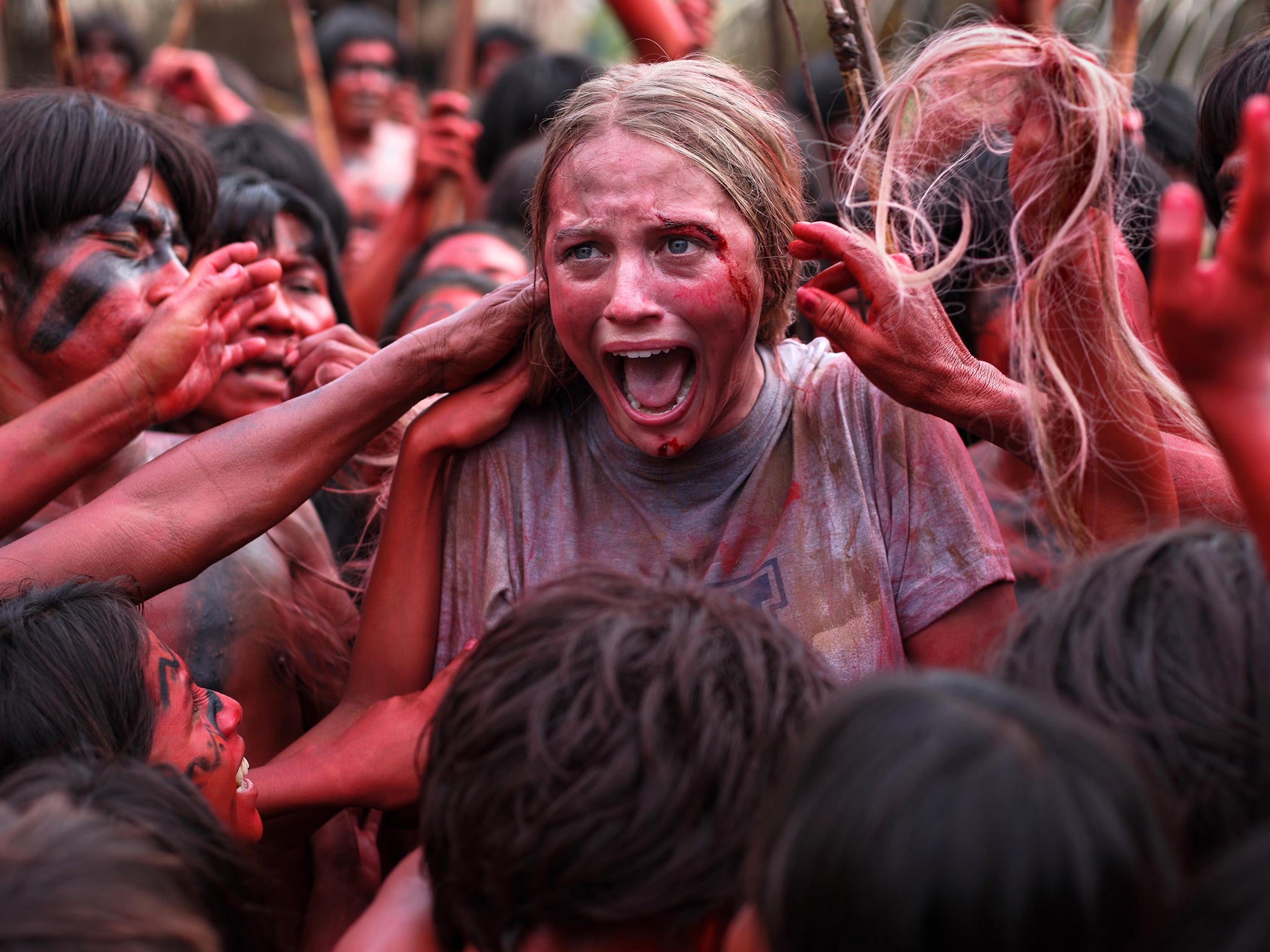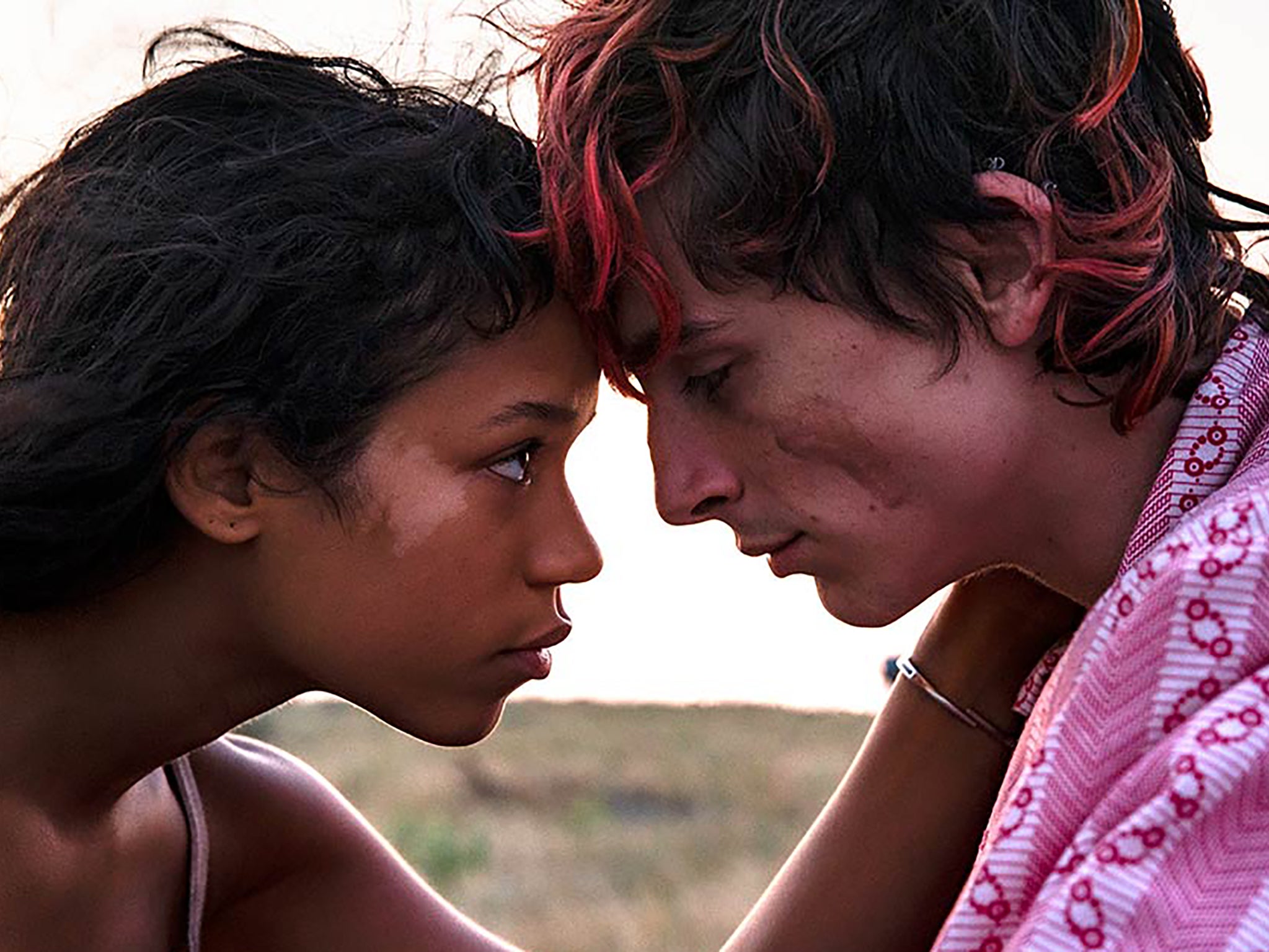Cannibal movies: the good, the bad and the indigestible
With revered Italian director Luca Guadagnino turning his lens on cannibalism in the Venice Festival-bound ‘Bones and All’, Geoffrey Macnab peels back the layers on the decades-long cinematic treatment of one of society’s last taboos

People eat each other on screen for many different reasons. If you look across the broad range of dramas and documentaries touching on cannibalism, you will find serial killers, aeroplane crashes, shipwreck victims, and ancient tribes who sup on human flesh as a matter of ritual.
Cannibalism is seemingly everywhere at the moment. It’s in mainstream TV series like Yellowjackets and in art house films like Julia Ducournau’s 2016 debut feature Raw and Claire Denis’ recently re-released Trouble Every Day. It’s there in Tobe Hooper’s 1974 classic horror Texas Chainsaw Massacre and in Eli Roth’s gory, Peru-set The Green Inferno. Certain prominent cannibals, most notably the Chianti-sipping Hannibal Lecter, have become pop culture heroes.
“They [cannibal stories] are a really enduring trope. We live in a society that is hyper-violent, where virtually any form of violence can be justified in some way, shape or form but cannibalism is one of the last taboos,” US writer Kea Wilson says. The author of the canny and surprisingly funny 2016 novel We Eat Our Own (set during the making of a 1970s cannibal movie) has a lot to say about our enduring fascination with this most morbid of subjects. “We don’t normally see folk getting eaten,” Wilson tells The Independent. “It [cannibalism] taps into some really primal impulses and fears about what constitutes our humanity.”
Some cannibal stories are distasteful in the extreme. Among them are crude exploitation pictures which set out to shock and titillate audiences with scenes of characters being ripped to bits, tortured, raped and eaten alive. Others, though, are far easier to appreciate and savour. For example, in revered Italian director Luca Guadagnino’s new feature Bones and All, which will premiere at the Venice Festival next month, the fine young cannibals in question are outcast adolescents who can’t help “gobblin’ up things that ain’t meant to be eaten” – as they are described in the 2015 young adult "cannibals-in-love" novel by Camille DeAngelis, from which the film has been adapted.
Taylor Russell plays Maren, the sensitive, mixed-up young protagonist who has the habit of devouring anyone who gets too close to her. Timothée Chalamet plays Lee, also an “eater”. They hit the road together. The film will be as much a coming-of-age movie as it will be a traditional cannibal movie. Filmmakers, however, will be hesitant to feature too many scenes of Chalamet gorging on human morsels and grisly tendons, simply for fear of putting off the young heartthrob’s throng of devoted fans. “This is a very romantic story, about the impossibility of love and yet, the need for it. Even in extreme circumstances. Timmy and Taylor have this power, this gleaming power, to portray these universal feelings,” Guadagnino told the trade publication Deadline last summer when the film started shooting.
There will surely still be splatter elements, though. After all, the book begins with Maren as a little kid chewing the face off her babysitter, “blood wet around my mouth”. The woman’s eardrum becomes stuck in Maren’s gums. Guadganino may be a sensitive and lyrical director but he has never been squeamish. Even in its more bristling moments, Bones And All is likely to be easier to digest than the slew of stomach-churning Italian cannibal movies made in the 1970s and 1980s. The most notorious of the batch was Ruggero Deodato’s Cannibal Holocaust (1980), in which a professor (Robert Kerman) and his mercenary guides scour the jungle searching for a group of young American documentary makers who have gone missing. The guides discover their cameras and footage… next to their corpses, which have been eaten to the bone.
This was one of the most scandalous films of its era, a “video nasty” banned in many countries and reviled for its racism, animal cruelty, sex, and violence. After the film premiered, its director was arrested and charged with murdering his actors, who mysteriously hadn’t been seen in public for some time, on camera. Only when they turned up alive and well was Deodato released.
Forty-two years later, the film is available to watch on Amazon Prime. The shock and scandal around it have dissipated, at least slightly. Over time, the film’s satirical dimension has also become more apparent. “Man seems to ignore the fact that on this very planet, there are still people living in the Stone Age and practising cannibalism. Primitive tribes isolated in a ruthless, hostile environment where the prevailing law is the survival of the fittest,” the commentary at the start of the film tells us. These words, though, play over footage of New York City, not the “Green Inferno” of the Amazon jungle where the events of Cannibal Holocaust unfold.
The found footage conceit was clearly an influence on later films like The Blair Witch Project. Cannibal Holocaust has the same ghoulish appeal as a fairground mystery ride. If you see a skull, there are bound to be worms crawling out of its eye sockets. Some of it, though, remains thoroughly repulsive. Even the film’s most ardent apologists will struggle to justify the scene of a turtle being slaughtered or the many graphic moments of sexual violence.
The film ends with the professor walking out into the New York streets after having sat through the horrific footage shot in the jungle. “I wonder who the real cannibals are,” he murmurs as he lights his pipe and contemplates the misdeeds of the white filmmakers he has just seen behave like conquistadors with cameras. The entire film is an atrocity exhibition and yet the director attempts to distance himself from the carnage that he himself has taken such a fetishistic pleasure in showing us. In cannibal movie terms, this is sheer hypocrisy; a clear case of wanting to have your innards and eat them too.
Every bit as egregious was Joe D’Amato’s Emmanuelle and the Last Cannibals (1977), a hybrid horror and sex movie. Laura Gemser plays an investigative journalist who ventures deep into the Amazon jungle with a leading anthropologist and some missionaries in tow searching for a lost tribe of cannibals. D’Amato combines softcore pornography with shock tactics that involve lots of snakes and corpses. Plus plenty of vomiting and screaming.

The Italian movie industry embraced cannibalism with relish. It was a case of “business: pure and simple”, says Jay Slater, author of the influential 2002 study, Eaten Alive: Italian Cannibal and Zombie Movies. “To make fistful of lire.” Part of the pleasure, he suggests, was also outraging censors and feeding audiences’ appetites for extreme body horror. Slater reflects nostalgically on Aristide Massaccesi’s Anthropophagus (1980), in which “the killer not only thrusts his hand into a heavily pregnant woman’s vagina, but also enthusiastically tucks into the foetus (a skinned rabbit covered in bacon rashers). It got the gullible most upset”.
Strangely, Anthropophagus notwithstanding, these films don’t feature large amounts of actual cannibalism. There may be severed penises and lopped-off limbs but the consumption of live flesh is kept to a minimum, possibly because it is actually quite messy and dreary to watch humans chomping on one another.
It’s intriguing to contrast the extravagantly bloody approaches of the Italian cannibal horror shockers to the far more measured approach of Frank Marshall’s Alive (1993), based on the true story of a Uruguayan plane carrying a rugby team that crashed in the Andes in October 1972. In this case, there is no sensationalising of the cannibalism. The scene in which the survivors cut up the corpses of dead comrades is presented in very sombre fashion, as if it’s a religious rite. “If we do this, we’ll never be the same again,” one man observes. “It’s like communion,” another adds. “From their death, we will live… people will understand.” Marshall, whose film was adapted from Piers Paul Read’s 1974 book, places the emphasis on the courage and resilience of his protagonists, not their diet.
The same story has been told in other films. The lurid Mexican-made 1976 thriller Survive! took a very lowbrow and crude approach. “The most shocking story of human endurance ever filmed… May be too intense for young teenagers,” warned its trailer. Much subtler and more reflective was Gonzalo Arijon’s 2007 feature documentary Stranded, based on the reminiscences of the survivors. They speak frankly about their cannibalism; how they had cut into the bodies with glass and penknives, taking out some shreds of muscle. They retched but forced themselves to swallow. One of the survivors, Roberto Canessa, acknowledged the paradox. On the one hand, they were showing their sophistication, resilience and will to live, but on the other, they were only “a step away from becoming savages, primitive creatures”.
Italians have been the most prolific purveyors of cannibal movies, but the British have a taste for the genre too. Arguably, one of the greatest, most underrated of all cannibal films is the 1972 London-set Death Line (also known as Raw Meat). Its director Gary Sherman was American, but its flavour was distinctly English. The story is largely set around Russell Square tube station. The flesh-eater lives deep in the bowels of the London Underground. He is descended from workers trapped in the system during the late Victorian era. Every so often, he surfaces in search of human nourishment. Donald Pleasence plays the curmudgeonly police officer investigating disappearances at the station. The cannibalism is only a small part of what makes the film distinctive. The deadpan humour registers as strongly as the bloodletting. The film also has telling points to make about class conflict and the rising tensions between young hippies and older establishment types.
Cannibal films now come in every guise imaginable. There are cannibal westerns, cannibal musicals, cannibal comedies, and lots of cannibal sex films. The titles hint at their absurdity. Films like Cannibal Women in the Avocado Jungle (1989) and Cannibals and Carpet Fitters (2018) clearly set out to spoof the genre.

Luca Guadagnino is trying to put some distance between his film and the low-grade exploitation movies that have preceded it. When it was announced that Bones and All would be screening in competition in Venice, the Italian director spoke very obliquely about the project. “There is something about the disenfranchised, about people living on the margins of society that I am drawn toward and touched by. I love these characters. The heart of the movie is tender and affectionate towards them. I’m interested in their emotional journeys,” he stated. Not a single mention of the dreaded “C” word.
It’s easy to understand Guadagnino’s reticence. Although Shakespeare plays and Greek myth have moments in which characters are tricked into eating their own children, highbrow critics have sometimes sneered at cannibalism as a subject far too infra dig for real artists, while audiences have remained queasy.
“We have a squeamishness about the idea of a human being in full possession of their faculties consuming another human. It feels like that belongs to a special category [while] seeing a zombie rip off somebody’s head and chew on it feels like fantasy,” Kea Wilson says of the extreme misgivings many of us still have about watching people eat one other on screen. However, with directors as admired as last year’s Palme d’Or winner Julia Ducournau and Guadagnino venturing into cannibal territory, the genre is achieving a level of respectability that would have seemed unthinkable in the days of Cannibal Holocaust. Back then, directors were more likely to get arrested than get rave reviews.
‘Bones and All’ premieres at this year’s Venice Film Festival, which runs from 31 August to 10 September. A cinema release has yet to be announced






Join our commenting forum
Join thought-provoking conversations, follow other Independent readers and see their replies
Comments